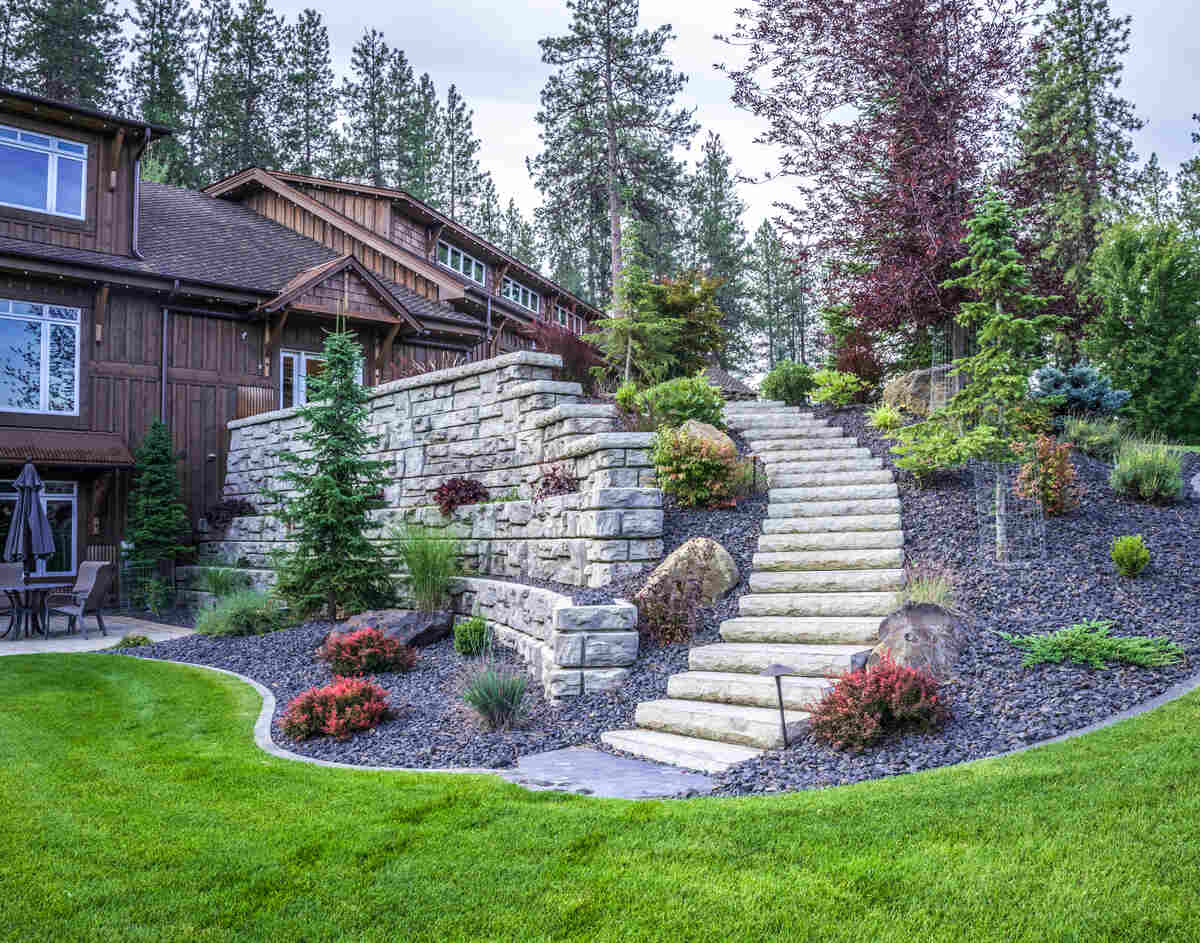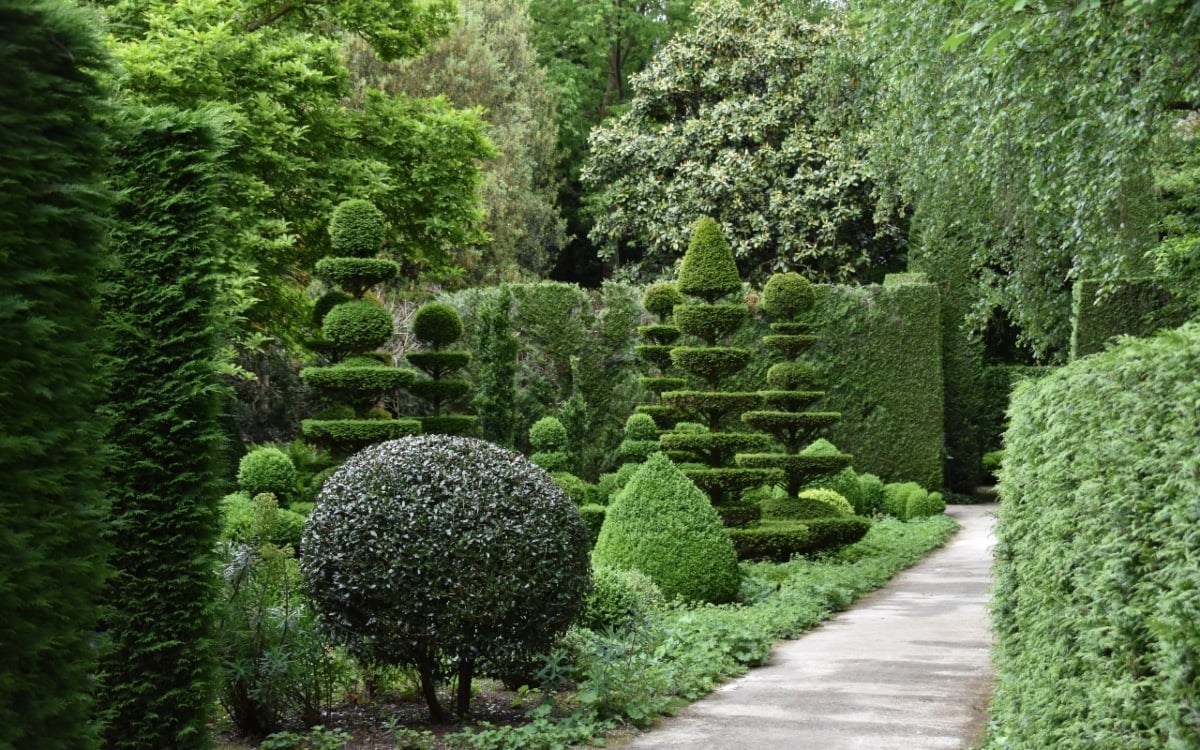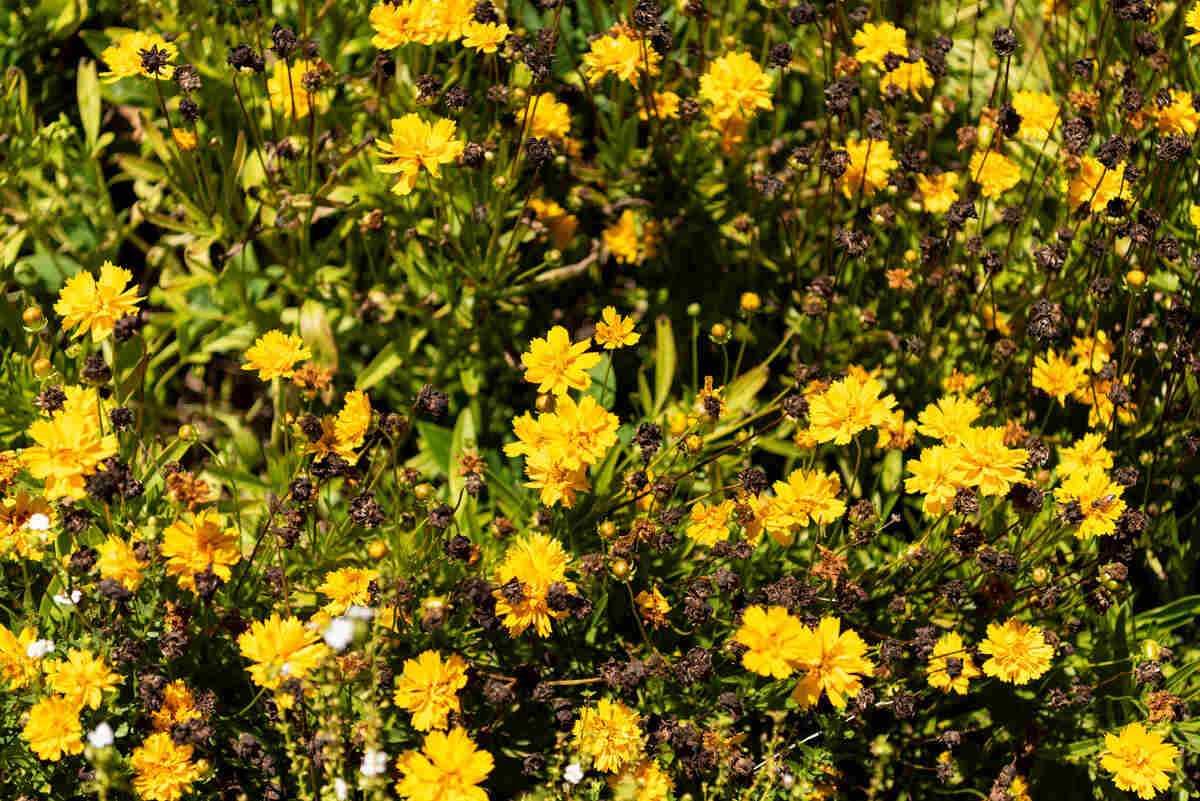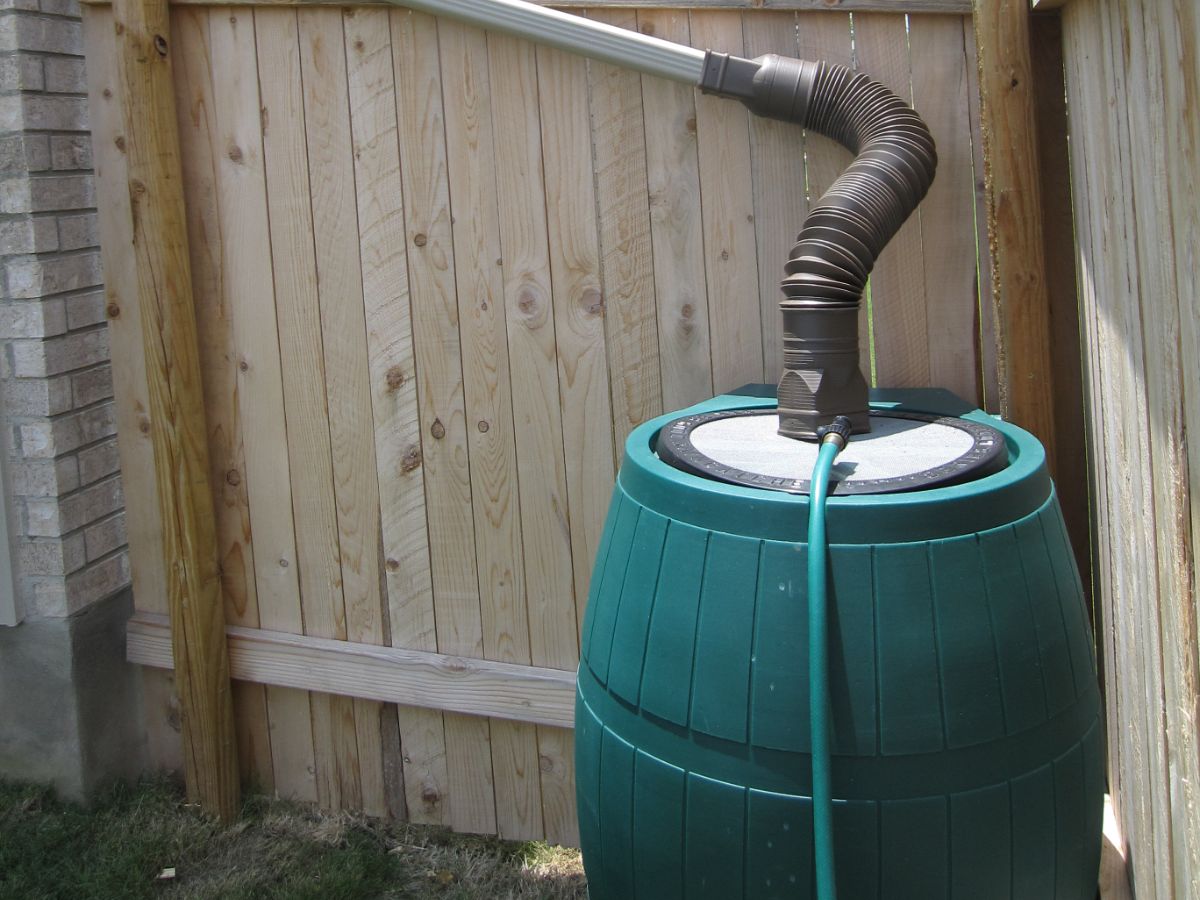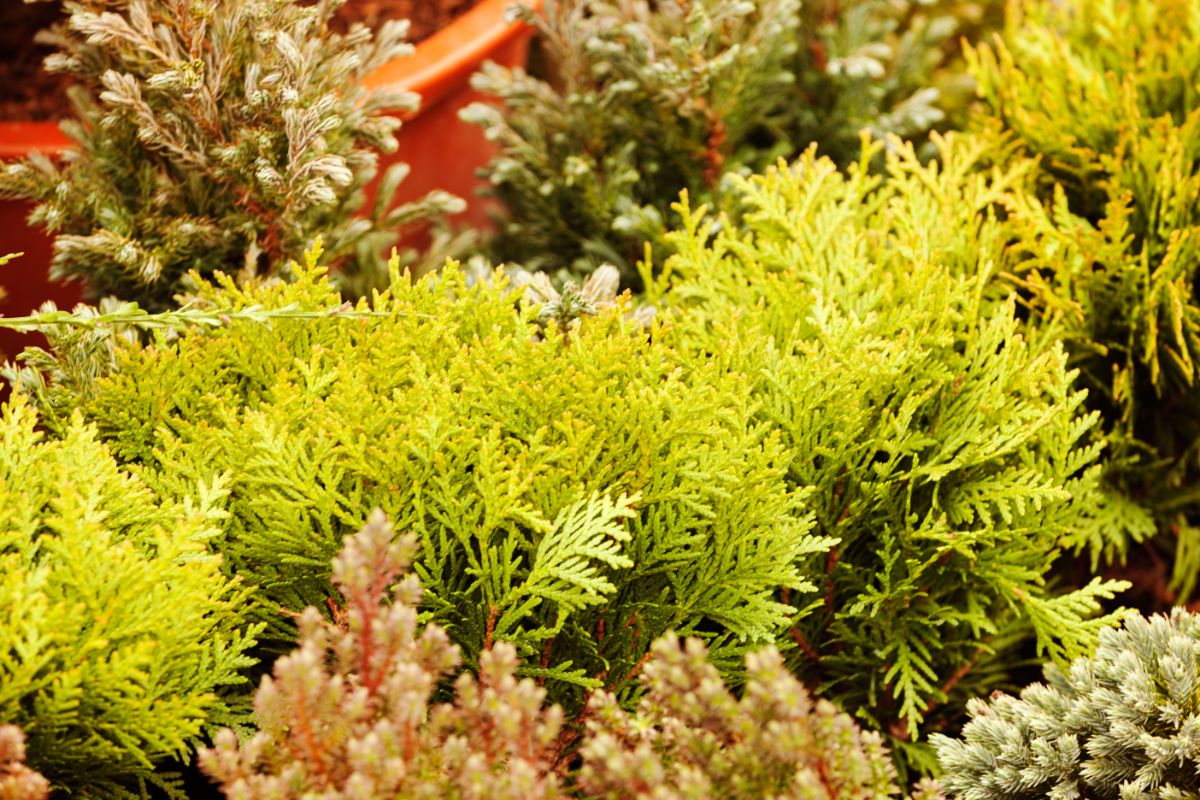
Like artwork, poetry, and music, yards and gardens should have a timeless, evergreen aesthetic. A well-landscaped yard should supply you with comfort and peace throughout the year. But only if you know how to landscape with and care for your evergreen shrubs.
What are Evergreen Shrubs?
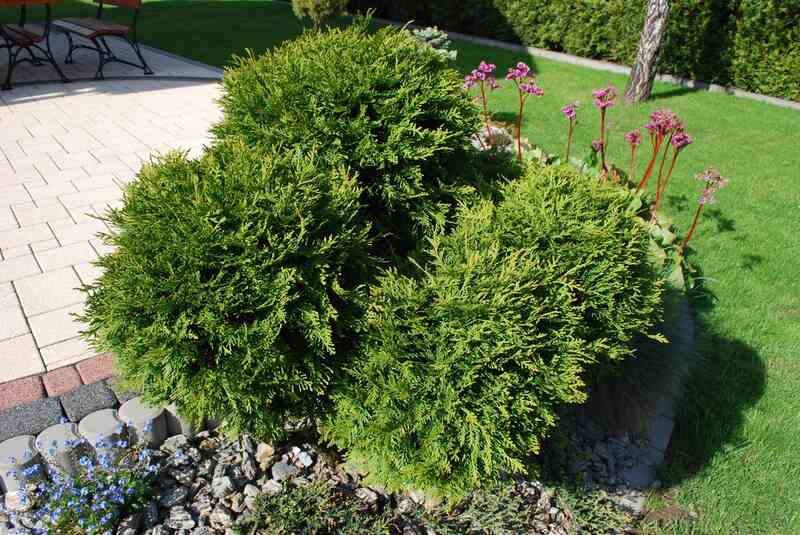
Evergreen shrubs come in thousands of varieties — from proud palms and boxwoods, to diminutive densiformis yews. All are ever-green, retaining their color year-round.
Evergreen shrubs lose their oldest foliage every year, but with the new growth, they still remain colorful throughout the year.
From beautiful blooms to soothing scents, there’s an evergreen plant for every yard and gardener. Evergreen shrubs offer permanent structure, which can boost curb appeal. This is especially true in northern states where winter wipes out almost everything.
Broken into two categories, evergreens can have narrow leaves or broadleaves. Narrow leaves are what likely comes to mind when you think of evergreens; they have needle-like foliage like pines and junipers. Broadleaves are everything else.
How to use Evergreen Shrubs in Your Landscaping
Evergreen shrubs can work their way into any landscaping design. Whether you’re seeking color, privacy, or easy care, there’s a shrub that works for your space. Some of the best evergreen uses include:
- Year-round color for all-seasons curb appeal
- Edging around decks, patios, sidewalks
- A great way to surround the foundation of your house
- Dwarf varieties are perfect for flower bed borders
- Tall, columnar varieties are ideal for creating privacy
- Provide contrast with mounded perennials and grasses, allowing colors to pop
- Low-maintenance ground cover for steep inclines or where grass is hard to grow
Best Evergreen Shrubs for Your Landscaping
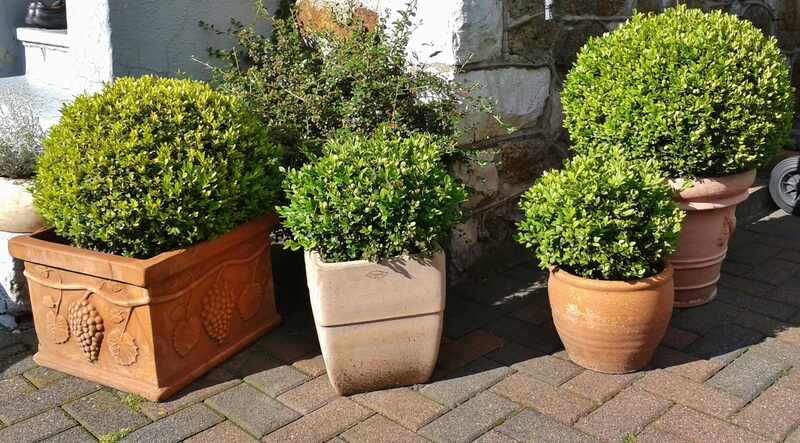
Photo Credit: Pxhere
Here are a handful of popular evergreen shrubs for your front yard, back yard, and side yard landscaping.
Remember: The most important part of choosing a shrub for your space is the zone, so that’s listed here for each type.
Sprinter Boxwood
This classic variety creates great hedges and grows easily in containers. While boxwood can be trimmed to any shape or size, they are best for square hedges between 2 and 4 feet tall.
Zones: 5-8
Color: Bright green year-round
Sun tolerance: Shade or sun
Drought tolerance: Average
Soil type: Normal soil that is well-drained
Romeo cleyera
Ideal for privacy or container plantings, cleyera can grow as tall as 8 to 10 feet, and half as wide. The variegated gold and green colors offer interest throughout the seasons.
Zones: 7-10
Color: Green throughout the year, with yellow hues in summer and red hues in winter
Sun tolerance: Full sun to part shade
Drought tolerance: Average
Soil type: Well-drained and moist
Mountain laurel
Blossoming in the spring, mountain laurels’ blooms pop against dark green foliage. These shrubs form large mounds and can grow up to 20 feet tall and 12 feet wide. Naturally deer-resistant, this shrub also does well in containers.
Zones: 4-9
Color: White, pink, or red flowers
Sun tolerance: Tolerates shade, but best flowering occurs in light shade
Drought tolerance: Requires moist soil
Soil type: Acidic pH with proper drainage and high organic matter
Variegated winter daphne
Ideal for foundation planting or shade gardens, this variety blooms in winter and early spring. Highly fragrant, winter daphnes are a pleasant addition to patios and decks.
Zones: 7-9
Color: Yellow-margined leaves, with pink buds and white flowers
Sun tolerance: Partial shade to filtered sun
Drought tolerance: Requires weekly water
Soil type: Slightly acidic to slightly alkaline soil that is moist and well-drained
Bird’s nest spruce
Growing outward with a slightly concave top, this spruce resembles a bird’s nest. The compact growth requires little maintenance and does well in harsh wind. This variety is a great choice against foundations as it grows outward instead of upward.
Zones: 3-7
Color: Classic green needles
Sun tolerance: Partial to full sun
Drought tolerance: Moderate
Soil type: Well-drained
October magic ruby camellia
Blooming heavily throughout the fall, this plant offers bright color against glossy green leaves. Once mature, this shrub reaches dimensions of 3 to 4 feet high and 4 to 5 feet wide. Camellias are well-suited to privacy planting, hedges, and containers.
Zones: 7-9
Color: Bold red blossoms against tough green leaves
Sun tolerance: Full shade to part sun
Drought tolerance: Medium
Soil type: Acidic, well-drained
Kramer’s red winter heath
With quick establishment, winter heath offers dense ground cover with wonderful winter color. Blossoms last through early spring and can be a great complement to hillsides, pathways, or conifers.
Zones: 6-8
Color: Magenta-red
Sun tolerance: Partial to full sun
Drought tolerance: Regular watering is important
Soil type: Rocky, unimproved soils
Mr. Bowling Ball Arborvitae
Beyond its fun name, this dwarf shrub is known for dense foliage. Reaching a height of about 30 inches, this arborvitae doesn’t need pruning, so it’s a great option for foundation planting, edging, and small areas.
Zone: 3-8
Color: Lacy, rich green
Sun tolerance: Full sun to partial shade
Drought tolerance: Requires regular watering
Soil type: Thrives in a variety of soils, including varied pHs
Valley valentine pieris
Also known as Japanese pieris, this foundation and border planting buds in late winter and early spring. A mature plant is about 5 to 7 feet wide, but the overall growth is slow. These pendant flowers are naturally resistant to deer.
Zones: 6-8
Color: Deep red to maroon
Sun tolerance: Partial to heavy shade
Drought tolerance: Needs regular watering
Soil type: Rich, acidic soils with plenty of organic matter
Wintercreeper
With many cultivars, wintercreepers are wonderful for containers, foundations, and massing. This does especially well disguising the electrical boxes in your front yard. Mounding varieties reach 2 to 3 feet in height.
Zones: 5-8
Color: Green with gold or white accent; some varieties turn red in winter
Sun tolerance: Full sun to full shade
Drought tolerance: Handles occasional drought and moderately dry areas
Soil type: Well-drained
Azaleas
Part of the genus rhododendron, azaleas are also a good choice if you want showy blooms in late spring. These plants retain beautiful green leaves throughout the winter and produce a lovely scent in the spring.
Zones: 5-8
Color: Countless options, including pink, white, and purple
Sun tolerance: Moderate sun
Drought tolerance: Low; prefer moist summers and adequate water
Soil type: Acidic, well-drained
How to Care for Your Evergreen Shrubs

Photo Credit: Pixabay
The first step in caring for any plant is selecting and planting the right variety. It’s crucial to be mindful of the USDA’s plant hardiness zones. You also want to consider soil and site conditions, such as sun exposure and extreme winds.
Evergreen shrubs need proper drainage, so no matter what kind of soil you’re working with, make sure water won’t pool.
Pruning
Once the shrubs are established, proper pruning is essential to keep them healthy and to help them generate growth.
There are two types of cuts: heading and thinning. Heading cuts encourage growth, leading to fuller plants. Thinning cuts remove branches right against the stem or trunk, and are used to reduce a plant’s size.
A general rule of thumb is to cut at a 45-degree angle to stimulate proper growth. The plant will try to heal the cut area and continue to grow.
Signs of disease
It’s also important to watch for potential disease and bug problems. A common sign is early or unusual needle and leaf drops. Other signs include discoloration and obvious damage.
Often, pruning the diseased portion is enough to stop it from spreading, and therefore save the entire plant. But it’s crucial to identify the specific problem and treat it accordingly.
Watch for Wind
The tricky part is coaching these plants through their first winter. While cold weather seems the obvious reason some plants turn brown, it’s actually the drying winds that wreak havoc on evergreens.
When you landscape with and care for evergreen shrubs, protection is key. Use an anti-desiccant spray to help your shrubs maintain moisture in their leaves. The winter conditions make it hard for small root systems to provide adequate water, and this natural product offers a tried-and-true solution.
FAQ About Evergreen Shrubs
Both provide color year-round, but evergreen shrubs are supported by stems growing from the ground. An evergreen tree is supported by one trunk.
Pruning in late winter or early spring will encourage new growth. You also can cut back new growth in mid-summer, but waiting till late summer or fall will leave your shrubs susceptible to wind and snow damage over the winter.
Mulch will reduce the weed growth around your shrubs and help keep moisture in the soil. Organic mulches such as bark, wood chips, or a rock garden improve the shrubs’ appearance and give your garden and yard a finished look.
Azaleas are a good example of a flowering shrub that is an evergreen. The flowers usually bloom in spring and summer, but unlike deciduous shrubs, the leaves will stay green year-round.
The ilex or holly shrub is an evergreen that produces red berries from fall into winter.
Evergreens with a slow growth rate, such as boxwood, densa yew, or pyramidalis yew are best for creating topiaries. The shrub must also be hardy and able to tolerate constant pruning.
Younger plants tend to be easier to train than older ones. It’s best to clip the stems in the desired shape, rather than shear the shrub and risk tearing young leaves. You may want to practice on a container shrub or accent plant before clipping the larger buxus.
Most garden centers have topiary kits that offer guidance.
When to Call a Landscaping Professional
Not sure how to landscape with or care for evergreen shrubs? Or do you need help deciding which shrub will work best in your yard? Call a landscaping pro near you for advice.
Main Photo Credit: vladimir_n / Canva Pro / License
